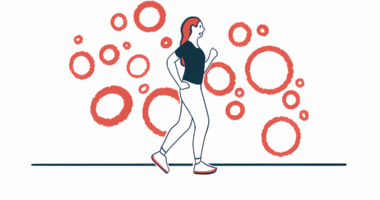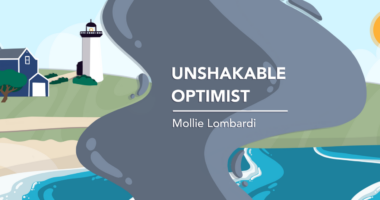Finding my Parkinson’s ‘sweet spot’ helps me manage suffering
Consistent self-management practices enable Dr. C to find his flow

In computer gaming there is a “sweet spot” where one’s skill level matches the pace of the game, allowing it to flow with an enveloping grace. This experience stems from extensive practice — time spent actively seeking that sweet spot, knowing when you’re there and when you’re not.
I don’t game much anymore due to Parkinson’s disease and my vision loss, but that same strategy can be incorporated into daily life. The practice involves looking for that sweet spot sensation, a place where my actions match the pace of life and things seem to flow effortlessly.
Life with Parkinson’s is not a game, and finding that optimal flow is a challenge. But it’s not impossible; it just requires a lot of challenging work. Effort is rewarded with moments of sacred flow amid all the misery, for which I’m deeply grateful. It’s my Parkinson’s sweet spot — or, in Buddhist terms, the Middle Way.
The Soka Gakkai website defines the Middle Way as:
“… the actions or attitudes that will create happiness for oneself and others; it is found in the ongoing, dynamic effort to apply Buddhist wisdom to the questions and challenges of life and society. … [It’s] the quest for a way of life that would give the greatest value to human existence and help relieve the world of suffering.”
Here’s what I’ve discovered about finding the Parkinson’s sweet spot.
First, I crafted my life so that I’d have time to retrain my brain. There’s no flow when the brain is on fire.
Second, I developed a set of tools to manage the disease. A poorly managed life means little time for practicing new skills.
Third, and most important, it really does take 10,000 hours of practice with the proper tools, as Malcolm Gladwell writes in “Outliers: The Story of Success.”
I’m placing an emphasis on time commitment because getting to the Parkinson’s sweet spot requires showing up every day and practicing new brain habits. We live in a culture where everything happens quickly, where results are expected with the click of a button. Because of this cultural expectation, and due to my own psyche of wanting things done now (or even preferably yesterday), finding the sweet spot has taken longer than I thought it would. It still takes longer than I want.
The Catch-22 is having to use a damaged brain to retrain itself.
The “go, no-go” effect, which can be seen as the urgency to move followed by a resistance to moving, and the constant brain noise of a disease-damaged brain made finding the sweet spot difficult. I had to retrain my brain to work around the damage and practice this new way of thinking as often as possible throughout the day. Not easy!
That’s where becoming a gentle observer helps. Observe, then practice. Eventually, the practice gets easier and evolves into the familiar sensations of flow, peace, and ease that accompany my sweet spot.
It’s been nine years since my Parkinson’s diagnosis. I’m just now experiencing my sweet spot with some consistency. The practice of ordinary calmness with a brain rehab model has been a game changer for me.
I can’t stay there all day. Nor can I get there every day. But simply visiting is healthy and renews my stamina.
After reading psychologist Paul Bloom’s book “The Sweet Spot: The Pleasures of Suffering and the Search for Meaning,” I agree with the book’s overview, which says that “effort, struggle, and difficulty can, in the right contexts, lead to the joys of mastery and flow.”
The book-summarizing subscription service Blinkist offers the following summary:
“The Sweet Spot (2021) is a refreshing antidote to all the books we read about being positive at all costs. It argues that negative experiences like pain, suffering, and discomfort are not something to be shied away from. In fact, they can add value to our lives. Instead of trying to avoid discomfort, we need to find the right discomfort. That is, the kind of challenge that makes our lives meaningful.”
Parkinson’s management can teach us this: Find what you can tolerate and learn from it; don’t run from it.
Suffering plays a deeper role as well. A good life involves more than pleasure. A warrior’s resilience is needed along with a calm, centered presence. My brain can’t be rushed or forced into a changed existence simply because I wish it so. If it were only that easy. Stable neural rewiring only occurs with extended proper training along with sustained, focused attention on managing Parkinson’s from that sweet spot.
Note: Parkinson’s News Today is strictly a news and information website about the disease. It does not provide medical advice, diagnosis, or treatment. This content is not intended to be a substitute for professional medical advice, diagnosis, or treatment. Always seek the advice of your physician or another qualified health provider with any questions you may have regarding a medical condition. Never disregard professional medical advice or delay in seeking it because of something you have read on this website. The opinions expressed in this column are not those of Parkinson’s News Today or its parent company, Bionews, and are intended to spark discussion about issues pertaining to Parkinson’s disease.








Leave a comment
Fill in the required fields to post. Your email address will not be published.